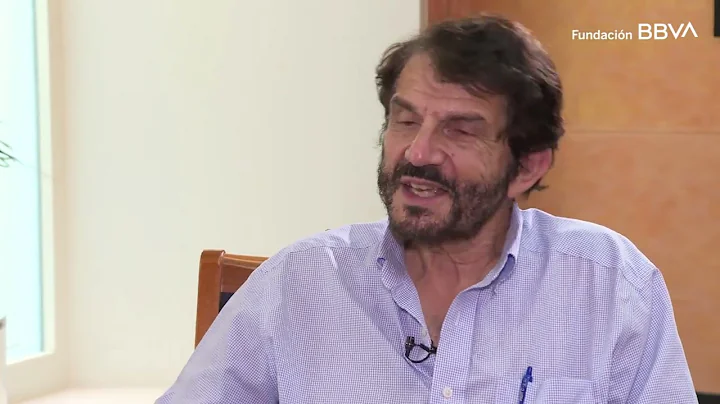David J Weitz
age ~60
from Del Mar, CA
David Weitz Phones & Addresses
- 13759 Pine Needles Dr, Del Mar, CA 92014 • (858)7200830
- Las Vegas, NV
- 3958 Gaffney Ct, San Diego, CA 92130 • (858)7200830
- 8465 Regents Rd, San Diego, CA 92122 • (858)4589188 • (858)5502009
- Deerfield, IL
- Cambridge, MA
- San Francisco, CA
- Los Altos, CA
Work
-
Company:Takeda san diego inc
-
Address:10410 Science Center Dr, San Diego, CA 92121
-
Phones:(858)6228528
-
Position:Cto
-
Industries:Noncommercial Research Organizations
Education
-
Degree:JD/MBA - Juris Doctorate and MBA
-
School / High School:UC Berkeley SOL Boalt Hall
Ranks
-
Licence:California - Active
-
Date:1992
Us Patents
-
Microfluidic Manipulation Of Fluids And Reactions
view source -
US Patent:7556776, Jul 7, 2009
-
Filed:Sep 8, 2005
-
Appl. No.:11/221585
-
Inventors:Seth Fraden - Newton MA, US
Darren Roy Link - Guilford CT, US
Galder Cristobal-Azkarate - Bordeaux, FR
Jung uk Shim - Lexington MA, US
David A. Weitz - Bolton MA, US -
Assignee:President and Fellows of Harvard College - Cambridge MA
Brandeis University - Waltham MA -
International Classification:B01L 3/02
-
US Classification:422100, 156300, 366341, 347 96, 436 43, 436 63, 436180, 422 50, 422 681, 422 81, 422 82, 422101
-
Abstract:The present invention relates generally to microfluidic structures, and more specifically, to microfluidic structures and methods including microreactors for manipulating fluids and reactions. In some embodiments, structures and methods for manipulating many (e. g. , 1000) fluid samples, i. e. , in the form of droplets, are described. Processes such as diffusion, evaporation, dilution, and precipitation can be controlled in each fluid sample. These methods also enable conditions within the fluid samples (e. g. , concentration) to be controlled. Manipulation of fluid samples can be useful for a variety of applications, including testing for reaction conditions, e. g. , in crystallization, chemical, and biological assays.
-
Method And Apparatus For Fluid Dispersion
view source -
US Patent:7708949, May 4, 2010
-
Filed:Dec 28, 2004
-
Appl. No.:11/024228
-
Inventors:Howard A. Stone - Brookline MA, US
Shelley L. Anna - Pittsburgh PA, US
Nathalie Bontoux - Cagnes sur Mer, FR
Darren R. Link - Cambridge MA, US
David A. Weitz - Bolton MA, US
Irina Gitlin - Brookline MA, US
Eugenia Kumacheva - Toronto, CA
Piotr Garstecki - Cambridge MA, US
Willow Diluzio - Westford MA, US
George M. Whitesides - Newton MA, US -
Assignee:President and Fellows of Harvard College - Cambridge MA
Governing Council of the Univ. of Toronto - Toronto -
International Classification:B01L 3/02
G01N 11/04
B01L 99/00
G05D 7/00 -
US Classification:422100, 422 681, 422103, 422110, 436180
-
Abstract:A microfluidic method and device for focusing and/or forming discontinuous sections of similar or dissimilar size in a fluid is provided. The device can be fabricated simply from readily-available, inexpensive material using simple techniques.
-
In Vitro Evolution In Microfluidic Systems
view source -
US Patent:7968287, Jun 28, 2011
-
Filed:Oct 8, 2004
-
Appl. No.:10/961695
-
Inventors:Andrew Griffiths - Strasbourg, FR
David Weitz - Cambridge MA, US
Keunho Ahn - San Diego CA, US
Darren R. Link - Lexington MA, US
Jerome Bibette - Paris, FR -
Assignee:Medical Research Council Harvard University - Cambridge MA
-
International Classification:C12Q 1/68
-
US Classification:435 6, 435180, 435375
-
Abstract:The invention describes a method for isolating one or more genetic elements encoding a gene product having a desired activity, comprising the steps of: (a) compartmentalising genetic elements into microcapsules; and (b) sorting the genetic elements which express the gene product having the desired activity; wherein at least one step is under microfluidic control. The invention enables the in vitro evolution of nucleic acids and proteins by repeated mutagenesis and iterative applications of the method of the invention.
-
Manipulation Of Fluids, Fluid Components And Reactions In Microfluidic Systems
view source -
US Patent:8592221, Nov 26, 2013
-
Filed:Apr 18, 2008
-
Appl. No.:12/595107
-
Inventors:Seth Fraden - Newton MA, US
Hakim Boukellal - Paris, FR
Yanwei Jia - Medford MA, US
Seila Selimovic - Bronx NY, US
Amy Rowat - Cambridge MA, US
Jeremy Agresti - Cambridge MA, US
David A. Weitz - Bolton MA, US -
International Classification:G01F 11/00
-
US Classification:436180, 422502, 422503, 137 2, 137 14
-
Abstract:Microfluidic structures and methods for manipulating fluids, fluid components, and reactions are provided. In one aspect, such structures and methods can allow production of droplets of a precise volume, which can be stored/maintained at precise regions of the device. In another aspect, microfluidic structures and methods described herein are designed for containing and positioning components in an arrangement such that the components can be manipulated and then tracked even after manipulation. For example, cells may be constrained in an arrangement in microfluidic structures described herein to facilitate tracking during their growth and/or after they multiply.
-
Multi-Stage Polarization Transformer
view source -
US Patent:20020191265, Dec 19, 2002
-
Filed:Jun 14, 2001
-
Appl. No.:09/881508
-
Inventors:Michael LaGasse - Lexington MA, US
Morris Kesler - Bedford MA, US
David Weitz - Cambridge MA, US
Mikhail Fridberg - Framingham MA, US
Hemonth Rao - Burlington MA, US
Jeffrey Shultz - West Townsend MA, US
Kevin Weldon - Townsend MA, US -
International Classification:G02F001/03
-
US Classification:359/246000
-
Abstract:A multi-stage polarization transformer is described that includes a first polarization transformer stage that receives an optical signal at an input and that generates a first transformed optical signal at an output. The first transformed optical signal has a polarization state within a first predetermined range. A second polarization transformer stage receives the first transformed optical signal at an input and generates a second transformed optical signal at an output. The second transformed optical signal has a polarization state within a second predetermined range. The second predetermined range is less than the first predetermined range.
-
Compositions For Sustained Action Product Delivery And Methods Of Use Thereof
view source -
US Patent:20030166509, Sep 4, 2003
-
Filed:Nov 20, 2002
-
Appl. No.:10/300070
-
Inventors:David Edwards - Boston MA, US
Richard Batycky - Newton MA, US
Jennifer Schmitke - Boston MA, US
Nicolas Tsapis - Cambridge MA, US
David Weitz - Bolton MA, US
Jeffrey Hrkach - Cambridge MA, US -
Assignee:Advanced Inhalation Research, Inc. - Cambridge MA
-
International Classification:A61K038/28
A61L009/04
A61K009/14
A61K031/56
A61K031/4965
A61K031/496
A61K031/137 -
US Classification:514/003000, 424/046000, 514/182000, 514/252130, 514/255060, 514/651000
-
Abstract:The present invention features pharmaceutical compositions comprising nanoparticles containing a sustained release bioactive agent, method of making such compositions, and method of therapy using such compositions.
-
Vesicles Comprising An Amphiphilic Di-Block Copolymer And A Hydrophobic Compound
view source -
US Patent:20040010060, Jan 15, 2004
-
Filed:Mar 19, 2003
-
Appl. No.:10/392123
-
Inventors:Mathieu Joanicot - Chatenay-Malabry, FR
Ani Nikova - San Diego CA, US
Maria Talingting - Burlington NJ, US
David Weitz - Bolton MA, US -
International Classification:C08F002/00
-
US Classification:523/201000
-
Abstract:The invention relates to new vesicles structures, and their use for delivering actives. The vesicles according to the invention are obtained from di-block copolymers. The vesicles comprise an external shell of a di-block copolymer comprising a hydrophilic block and a hydrophobic block, and at least one internal shell of the same or another di-block copolymer comprising a hydrophilic block and a hydrophobic block, the hydrophobic block of the external shell facing the hydrophobic block of the internal shell(s), and further comprise a hydrophobic compound between the shells.
-
Fluidic Droplet Coalescence
view source -
US Patent:20070195127, Aug 23, 2007
-
Filed:Jan 24, 2007
-
Appl. No.:11/698298
-
Inventors:Keunho Ahn - San Diego CA, US
Henry Chong - Cambridge MA, US
Jeremy Agresti - Cambridge MA, US
David Weitz - Bolton MA, US
Darren Link - Guilford CT, US -
Assignee:President and Fellows of Harvard College - Cambridge MA
-
International Classification:B41J 2/06
-
US Classification:347055000
-
Abstract:The present invention generally relates to systems and methods for the control of fluidic species and, in particular, to the coalescence of fluidic droplets. In certain instances, the systems and methods are microfluidic. In one aspect, the invention relates to systems and methods for causing two or more fluidic droplets within a channel to coalescence. The fluidic droplets may be of unequal size in certain cases. In some embodiments, a first fluidic droplet may be caused to move at a first velocity, and a second fluidic droplet may be caused to move at a second velocity different from the first velocity, for instance, substantially greater than the first velocity. The droplets may then coalesce, for example, upon application of an electric field. In the absence of an electric field, in some cases, the droplets may be unable to coalesce. In some cases, two series of fluidic droplets may coalesce, one or both series being substantially uniform. For instance, one series of droplets may have a distribution of diameters such that no more than about 5% of the droplets have a diameter greater than about 10% of the average diameter. In certain cases, one or more series of droplets may each consist essentially of a substantially uniform number of entities of a species therein (i.e., molecules, cells, particles, etc.). The fluidic droplets may be coalesced to start a reaction, and/or to stop a reaction, in some cases. For instance, a reaction may be initiated when a species in a first droplet contacts a species in a second droplet after the droplets coalesce, or a first droplet may contain an ongoing reaction and a second droplet may contain a species that inhibits the reaction. Other embodiments of the invention are directed to kits or methods for promoting the coalescence of fluidic droplets.
Medicine Doctors

David J. Weitz
view sourceSpecialties:
Diagnostic Radiology
Work:
Medical Diagnostic Imaging GroupAdvanced Radiology Healthcare
2270 S Ridgeview Dr STE 127, Yuma, AZ 85364
(928)3170470 (phone), (928)3170467 (fax)
Medical Diagnostic Imaging Group
1501 W 24 St STE B, Yuma, AZ 85364
(855)6135393 (phone), (602)2469645 (fax)
2270 S Ridgeview Dr STE 127, Yuma, AZ 85364
(928)3170470 (phone), (928)3170467 (fax)
Medical Diagnostic Imaging Group
1501 W 24 St STE B, Yuma, AZ 85364
(855)6135393 (phone), (602)2469645 (fax)
Education:
Medical School
Wayne State University School of Medicine
Graduated: 2001
Wayne State University School of Medicine
Graduated: 2001
Languages:
English
Description:
Dr. Weitz graduated from the Wayne State University School of Medicine in 2001. He works in Yuma, AZ and 1 other location and specializes in Diagnostic Radiology. Dr. Weitz is affiliated with Yuma Regional Medical Center.
Name / Title
Company / Classification
Phones & Addresses
CTO
Takeda San Diego Inc
Noncommercial Research Organizations
Noncommercial Research Organizations
10410 Science Center Dr, San Diego, CA 92121
Founder
Raindance Technologies, Inc.
Surgical and Medical Instruments and Apparatus
Surgical and Medical Instruments and Apparatus
44 Hartwell Ave, Lexington, MA 02421
Director
SPHEREBIO, INC
C/O John Heyman 50 Craigie St #24, Somerville, MA 02143
213 Grn Rd, Bolton, MA 01740
213 Grn Rd, Bolton, MA 01740
CTO
Takeda San Diego Inc
Noncommercial Research Organizations
Noncommercial Research Organizations
10410 Science Ctr Dr, San Diego, CA 92121
(858)6228528, (858)5500526, (877)8253327, (858)6228528
(858)6228528, (858)5500526, (877)8253327, (858)6228528
Treasurer
FLOWSEL INC
29 Oxford St Pierce Hall 231, Cambridge, MA 02138
213 Grn Rd, Bolton, MA 01740
213 Grn Rd, Bolton, MA 01740
Associate
President & Fellow of Harvard College
College/University
College/University
240 Longwood Ave, Boston, MA 02115
Associate
President and Fellows of Harvard College
College/University
College/University
4 Blackfan Cir, Boston, MA 02115
Co-Founder, Founder
RainDance Technologies
Biotechnology · Mfg Medical Testing Equipment · Mfg Surgical/Medical Instruments
Biotechnology · Mfg Medical Testing Equipment · Mfg Surgical/Medical Instruments
749 Middlesex Tpke, Billerica, MA 01821
44 Hartwell Ave, Lexington, MA 02421
(781)8616300
44 Hartwell Ave, Lexington, MA 02421
(781)8616300
Lawyers & Attorneys
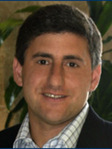
David Jeffrey Weitz, San Diego CA - Lawyer
view sourceAddress:
10410 Science Center Dr, San Diego, CA 92121
(858)6228528 (Office)
(858)6228528 (Office)
Licenses:
California - Active 1992
Experience:
Sr. VP, General Counsel and Chief IP Counsel at Takeda San Diego - 2002-present
Partner at Wilson Sonsini Goodrich & Rosati - 1996-2002
Partner at Wilson Sonsini Goodrich & Rosati - 1996-2002
Education:
UC Berkeley SOL Boalt Hall
Degree - JD/MBA - Juris Doctorate and MBA - Law
Graduated - 1992
University of California - Berkeley
Degree - Masters of Science - Organic Chemistry
Graduated - 1989
Massachusetts Inst of Tech
Degree - Bachelor of Science - Chemistry
Graduated - 1987
Degree - JD/MBA - Juris Doctorate and MBA - Law
Graduated - 1992
University of California - Berkeley
Degree - Masters of Science - Organic Chemistry
Graduated - 1989
Massachusetts Inst of Tech
Degree - Bachelor of Science - Chemistry
Graduated - 1987
Specialties:
Intellectual Property - 50%, 32 years
Contracts / Agreements - 50%, 25 years
Contracts / Agreements - 50%, 25 years
Resumes

David Weitz
view source
David Weitz
view source
David Weitz
view source
David Weitz
view source
David Weitz
view sourceMyspace
Googleplus
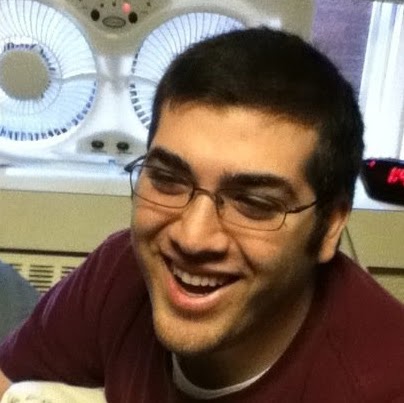
David Weitz
Education:
Central Connecticut State University - Management Information Systems, South Windsor High School

David Weitz
Education:
Benjamin N. Cardozo School of Law

David Weitz
Education:
Kent State University - Business Management

David Weitz

David Weitz

David Weitz

David Weitz

David Weitz
Flickr
Plaxo

David Weitz
view sourceJerusalem, IsraelConsultant/Founder/CEO at David Weitz Computer Ser...

David Weitz
view sourceKomar
Classmates

David Weitz
view sourceSchools:
Calhoun High School Merrick NY 1998-2002
Community:
Tony Frank, Ginny Bennette, Michael Cavuoto, Michael Loeser, Charles Hinke

David Weitz
view sourceSchools:
North Warren High School Chestertown NY 1977-1983
Community:
Peggy Moser, Gary Bolton, Jessica Baker

David Weitz
view sourceSchools:
North Warren High School Chestertown NY 1979-1983
Community:
Peggy Moser, Gary Bolton

Loras Academy, Dubuque, I...
view sourceGraduates:
David Weitz (1955-1959),
Norbert Tressel (1950-1953),
Lawrence Lyons (1955-1959)
Norbert Tressel (1950-1953),
Lawrence Lyons (1955-1959)

Wayne State University - ...
view sourceGraduates:
David Weitz (1997-2001),
Derek Einhorn (1994-1998),
Kim Horn (1994-2000),
Stephen Gryzan (1975-1979),
Edward Lake Jr (1976-1980),
Michael Zachareas (1993-1997)
Derek Einhorn (1994-1998),
Kim Horn (1994-2000),
Stephen Gryzan (1975-1979),
Edward Lake Jr (1976-1980),
Michael Zachareas (1993-1997)

Taipei American School, T...
view sourceGraduates:
David Weitz (1975-1979),
James Slaton (1972-1976),
Irene Talbot (1968-1972),
James Feely (1976-1981),
Ryan Williams (1975-1979),
David Mroz (1969-1973)
James Slaton (1972-1976),
Irene Talbot (1968-1972),
James Feely (1976-1981),
Ryan Williams (1975-1979),
David Mroz (1969-1973)

Kansas State University -...
view sourceGraduates:
David Weitz (1983-1988),
Ana Caguin (1983-1988),
Matthew Worley (1989-1989),
Greg Vavroch (1968-1972),
Michael Blankenship (1986-1992)
Ana Caguin (1983-1988),
Matthew Worley (1989-1989),
Greg Vavroch (1968-1972),
Michael Blankenship (1986-1992)

Perfoming Arts School, Ph...
view sourceGraduates:
Anita Yuthasastrkosol (1970-1974),
Shawn Mott (1980-1984),
anna babik (1981-1985),
Franki Pressman (1994-1998),
David Weitz (1985-1989)
Shawn Mott (1980-1984),
anna babik (1981-1985),
Franki Pressman (1994-1998),
David Weitz (1985-1989)
Youtube

David Weitz
view source
David Weitz
view source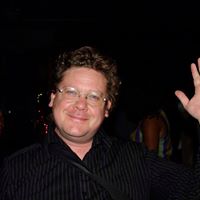
David Scott Weitz
view source
David Weitz
view source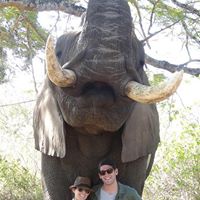
David Weitz
view source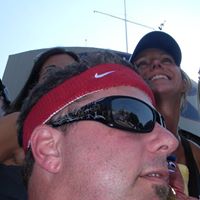
David Andrew Weitz
view source
David Weitz
view source
David Weitz
view sourceNews

What is glass?
view source- top moving. When that happens, it becomes harder and harder for you to navigate across the dance floor. If youre with your partner and you want to just trade places, you cant do it because youre so jammed, you need to get other people to move, David Weitz, a Harvard physicist, says.
- Date: Oct 17, 2023
- Category: Science
- Source: Google

'Human Cell Atlas' Helps Scientists Trace Building Blocks Of Disease : Shots - Health News
view source- One of the technological advances that enabled the Human Cell Atlas came in 2014, when Regev and colleagues at Harvard Steve McCarroll and David Weitz made improvements to a technology called single-cell RNA sequencing, which reads the RNA in each cell to see which genes are active and identifie
- Date: Aug 13, 2018
- Category: Headlines
- Source: Google
Get Report for David J Weitz from Del Mar, CA, age ~60












